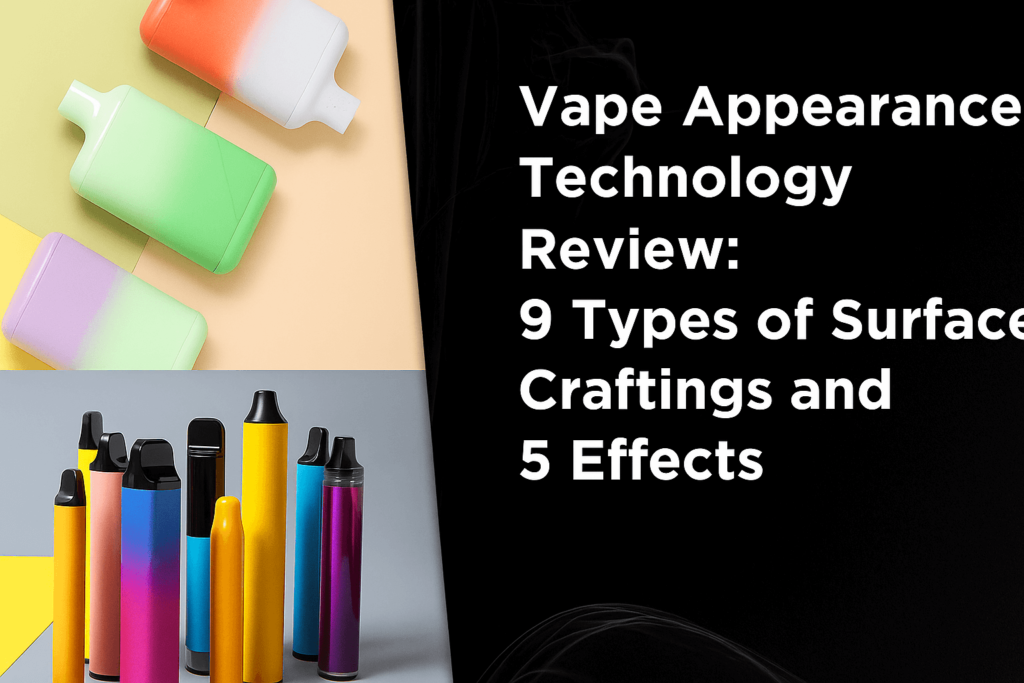The diversity of appearance craftsmanship and fine design in vapes are crucial factors in their market competitiveness. This article organizes the common appearance craftsmanship and effects in the vape industry.
I. Appearance Craftsmanship
1. Spraying (Spray Coating)
Spraying, also known as the coating process, involves spraying paint or coatings onto the surface of a component to create an aesthetically pleasing effect. Spray coating is one of the most common surface treatments for vapes.
Metal Substrate: Mainly aluminum alloy and zinc alloy. Aluminum alloy is commonly used for disposable vapes and pod vapes, while zinc alloy is typically electroplated and used for large-scale vape devices. The spraying process involves: degreasing, acid washing, chromating, and spraying.
Plastic Shell Substrate: Common materials include PC, ABS, and PCTG, often used for disposable vape shells. The process involves: deburring, cleaning, and spraying.
| Grade | Metal Spray Coating | Plastic Spray Coating |
|---|---|---|
| Key Points of Processing | Degreasing, acid washing, chromating | Hair removal, ultrasonic cleaning |
| Common Technology | Silent spraying, anodizing + spraying | Multi-layer spraying, double injection |
| Environmental Impact | Spraying is more environmentally friendly (no solvent) | Needs controlled spraying |
| Cost | Expensive (requires equipment and skills) | Lower cost (suitable for large production) |
| Appearance Effect | Metallic texture, gradient oxidation | Multiple colors, imitation glass/water crystal effect |
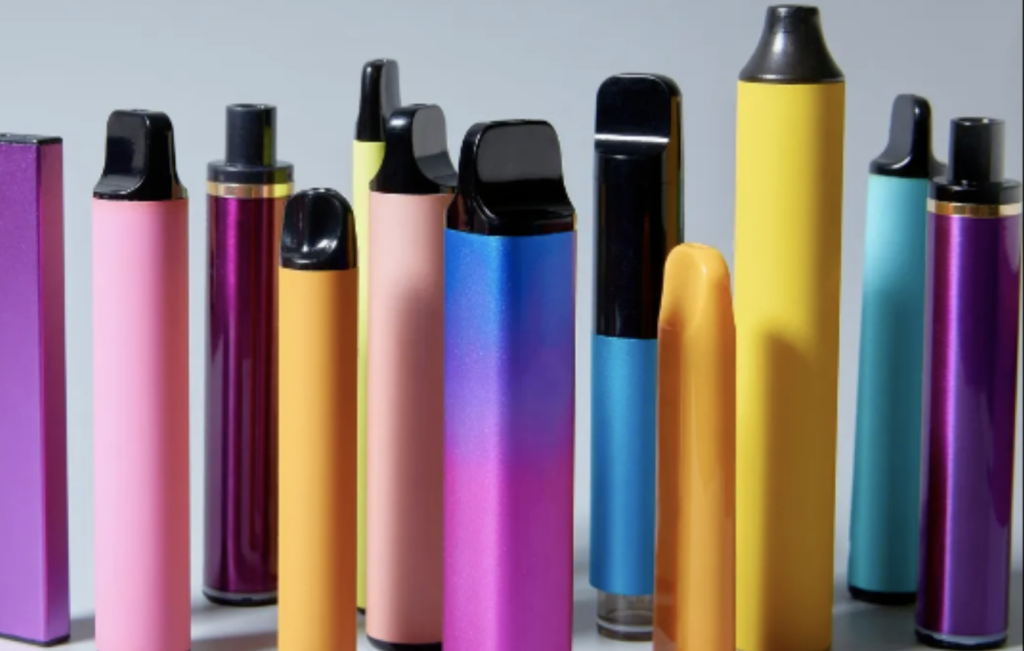
2. No-Spray Coating
No-spray materials are modified using specific compatibility technologies to directly form the desired appearance effect through injection molding, without the need for spray painting.
These materials are typically made by adding pearlescent powder or metallic pigments into specific resins and modifying them to achieve excellent appearance and physical properties.
This process simplifies production, enhances efficiency, and reduces environmental pollution, achieving low-carbon and eco-friendly goals.
In the vape industry, no-spray materials are widely applied to vape shells, creating effects like flow patterns, specks, and sparkles.
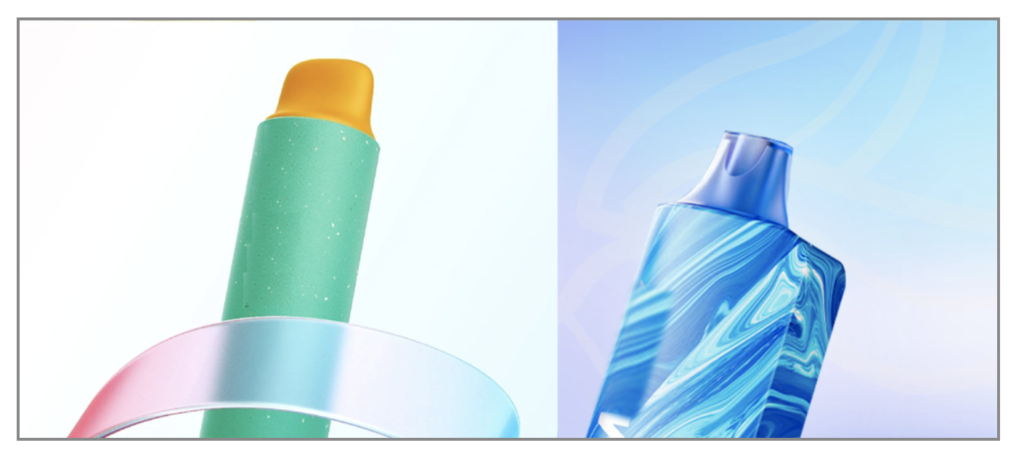
3. UV Printing
“UV” refers to ultraviolet light. UV flatbed printing, a type of piezoelectric inkjet printing, uses ultraviolet light to cure the ink. This printing process involves the use of light-sensitive ink that reacts with UV light, causing the pigments to solidify on the material’s surface.
UV printing is fast, with bright and rich colors, abrasion-resistant, UV-resistant, and simple to operate, making it widely applicable in industrial printing.

4. Anodizing
Anodizing is based on electrochemical principles.
Taking aluminum anodizing as an example, aluminum or aluminum alloy products are used as anodes in an acidic solution, where the aluminum atoms lose electrons to form aluminum ions (Al³⁺). These ions react with the anions in the electrolyte to form an oxide layer on the aluminum surface. This oxide layer grows outward from the substrate material.
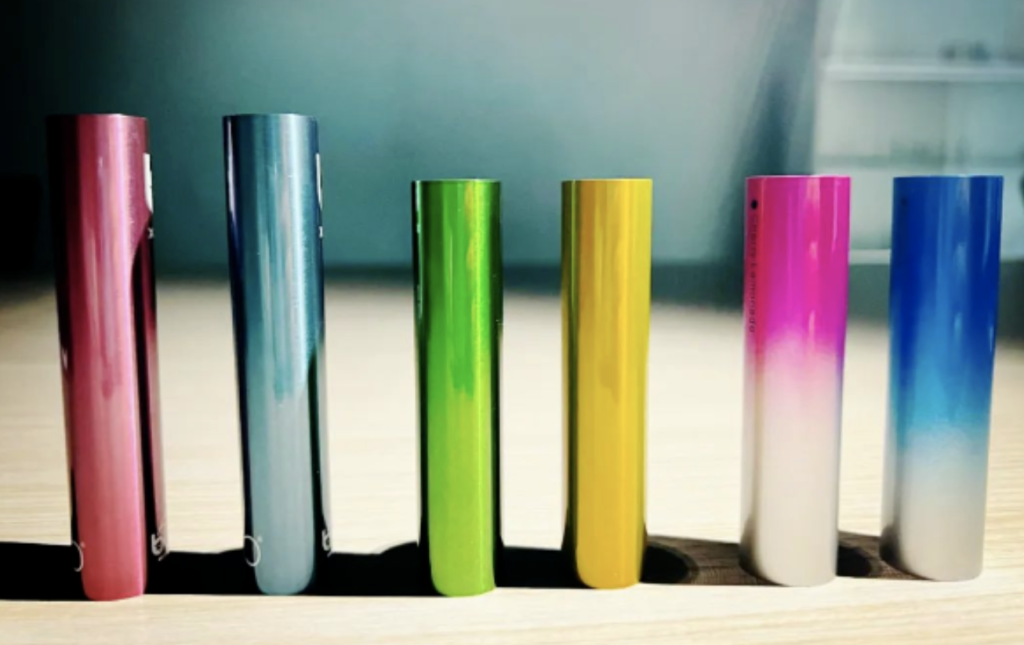
5. Two-Color Injection Molding
Two-color injection molding, also known as double-material injection molding, allows for different materials to be used in different parts of a product. This technique enables the product to have a more varied and differentiated appearance, which is particularly useful for vapes.
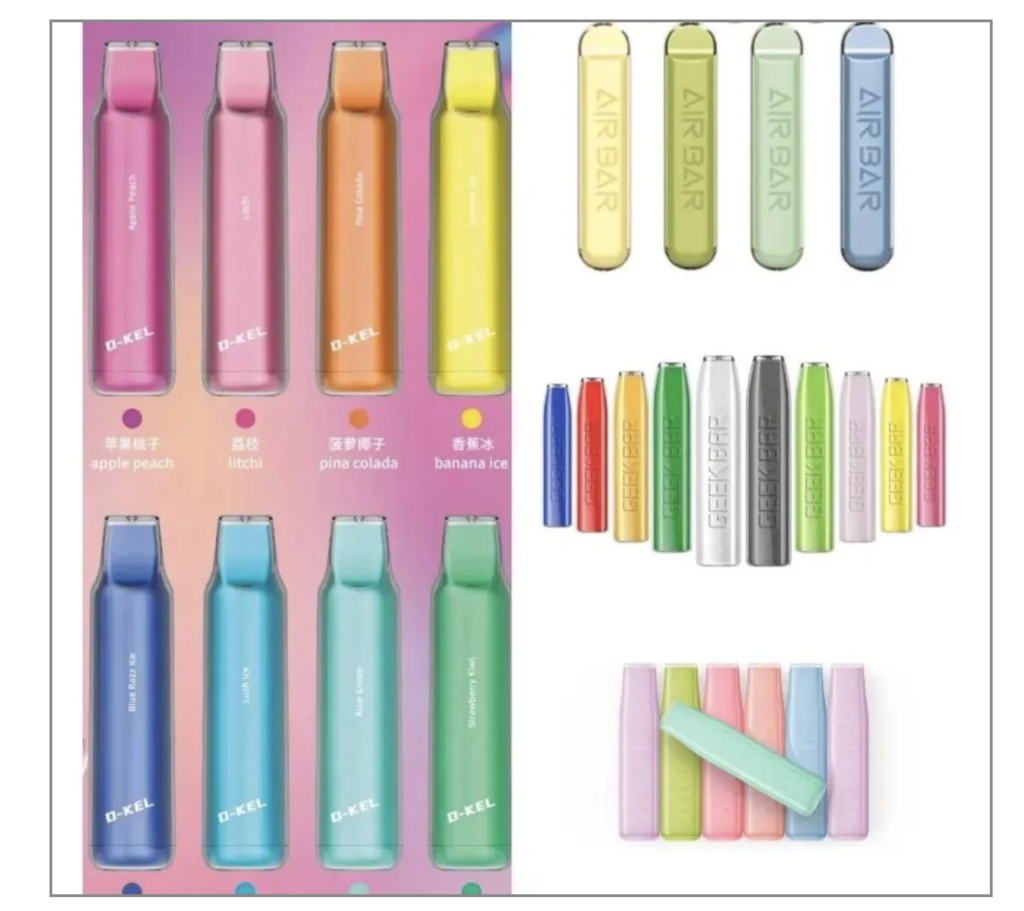
6. Leather Covering
The leather covering process involves applying a layer of leather material to the surface of metal or plastic. This not only provides a rich array of colors and textures but also offers a smooth and comfortable tactile experience.
Leather-covered vape pens can present various colors and textures depending on the leather material and post-processing techniques, giving them an upscale and elegant appearance. They are not only waterproof and oil-resistant but also resistant to high temperatures and humidity.
Taking PU leather as an example, it increases the friction between the vape and the palm, significantly reducing the chance of slipping. Additionally, the overall tactile experience is softer and more refined, offering a warm and comforting feel when held, making it very pleasant to the touch.
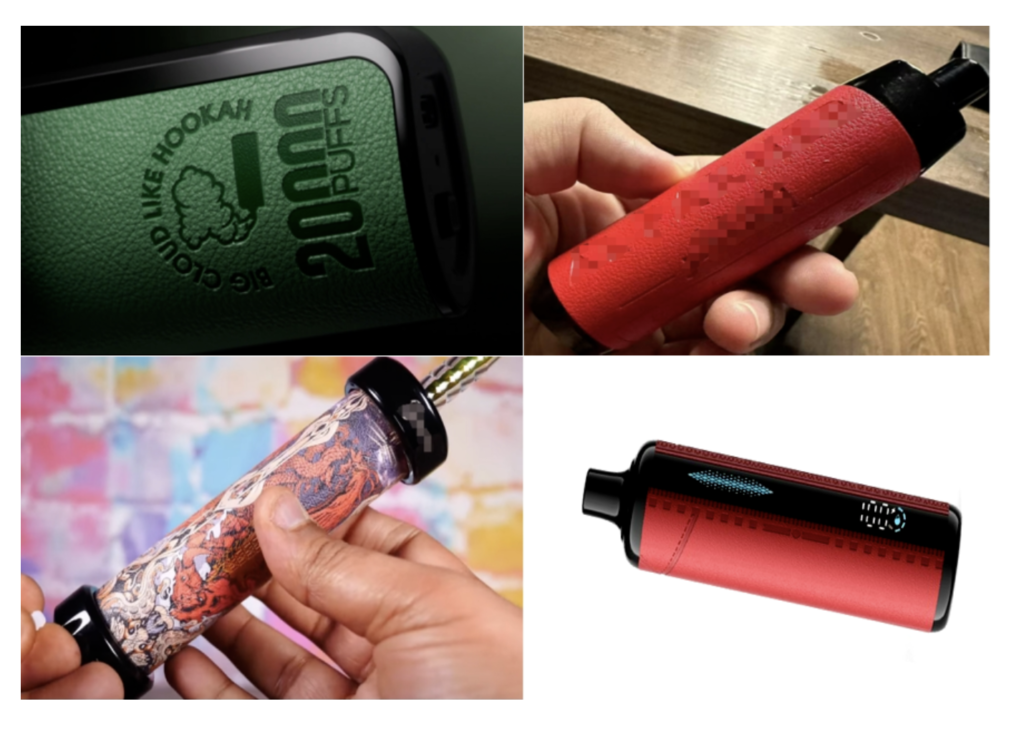
7. Micro-Arc Oxidation
Microarc oxidation (MAO), also known as Plasma Electrolytic Oxidation (PEO) or Microplasma Oxidation (MPO), is a process where a combination of electrolyte and specific electrical parameters produces an arc discharge that generates high temperature and pressure on the surface of metals such as aluminum, magnesium, titanium, and their alloys. This results in the in-situ growth of a ceramic oxide layer mainly composed of the base metal oxide. The materials most commonly treated by microarc oxidation include magnesium, aluminum, titanium, and their alloys. Additionally, materials such as tantalum, niobium, zirconium, and beryllium can also undergo direct microarc oxidation, making this technology highly promising for a wide range of applications.
The process consists of three main parts: pretreatment of aluminum-based materials, microarc oxidation, and post-treatment. The typical process flow is as follows: aluminum-based workpieces → chemical degreasing → cleaning → microarc oxidation → cleaning → post-treatment → product inspection.
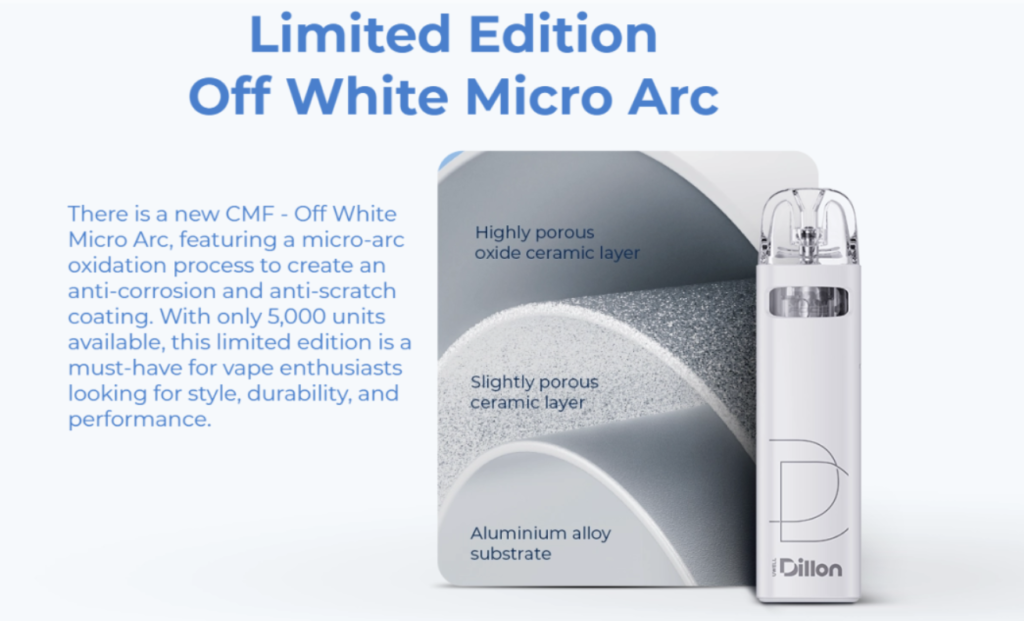
8. PVD Coating
Physical Vapor Deposition (PVD) is a vacuum-based technique in which materials are vaporized into atoms, molecules, or ions and deposited onto a substrate surface. Common PVD techniques include evaporation and sputtering.

9. In-Mold Labeling (IML)
IML is a process where a pre-printed PET film is inserted into an injection mold. The PET film’s surface is printed with patterns and then heated to bond with the injected plastic, forming a single integrated product.
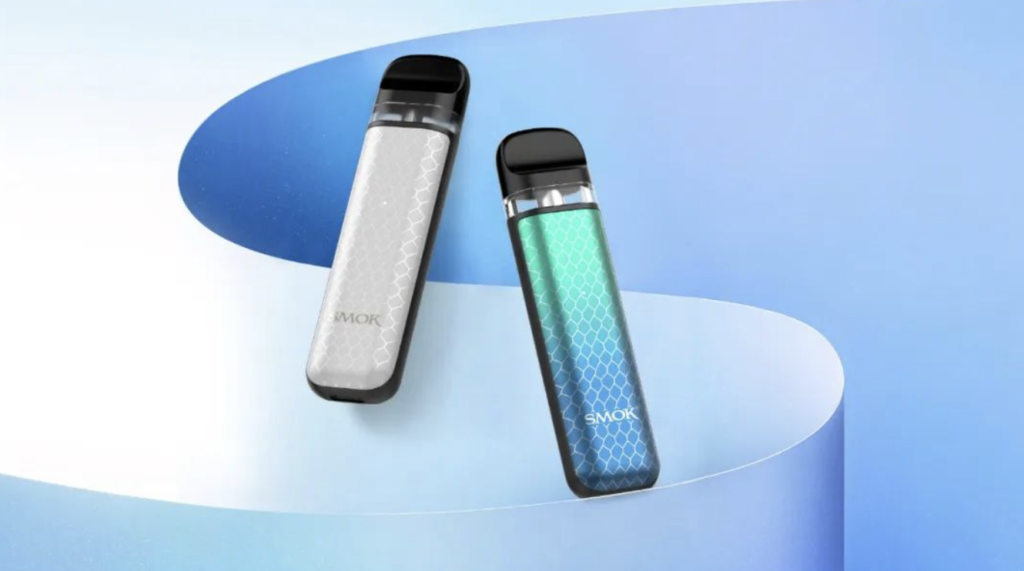
II. Appearance Effects
1. Gradient Colors
Gradient colors are a common appearance effect in vapes. Two primary processes used to achieve gradient colors are anodizing and spraying.

2. Flow Patterns
Flow patterns are a common effect in vape shells made of PC/ABS materials. This effect is created using high-melting-point colorants during the extrusion process. The pigment distribution is irregular, creating a flow-like pattern that resembles marble.

3. Optical Texture
Optical texture, also known as micro-nano texture, is based on physical principles like light refraction, reflection, and scattering. By using nanoscale microstructures on a material’s surface, unique visual effects, such as light and color changes, are created.
Optical textures are typically applied via UV transfer printing, injection molding, or direct lamination, depending on the material and design needs. This effect creates an exciting visual effect for vape products.
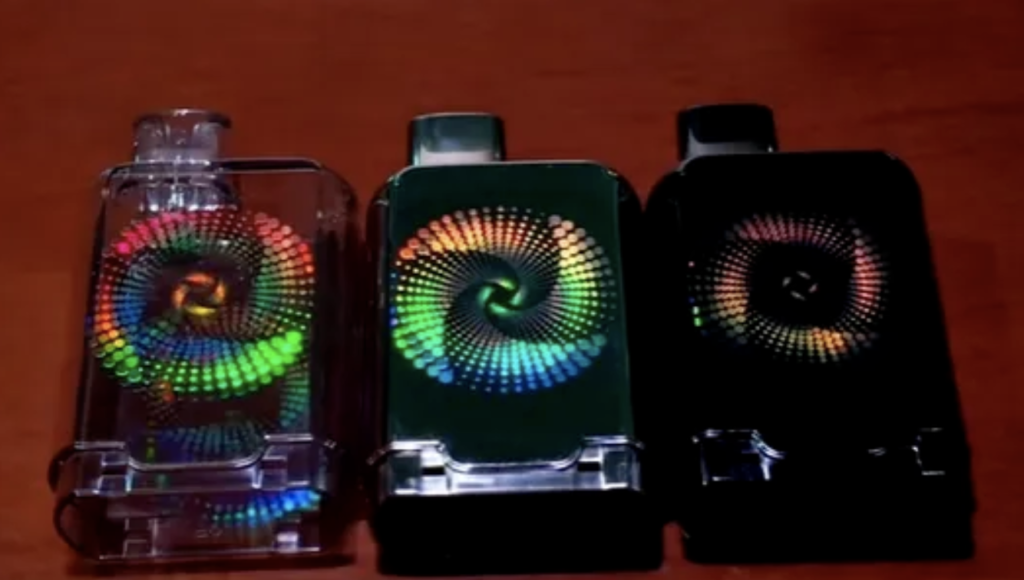
4. Ice Flower Paint
Ice flower paint, also called crackle paint, is a surface treatment technique where cracks form in the resin during the curing process, creating a unique cracked effect.
For aluminum alloys, the crackle effect can be achieved through spray painting, laser engraving, chemical etching, or electroplating, with spray-painted crackle paint being the easiest and most commonly used method for vape devices.
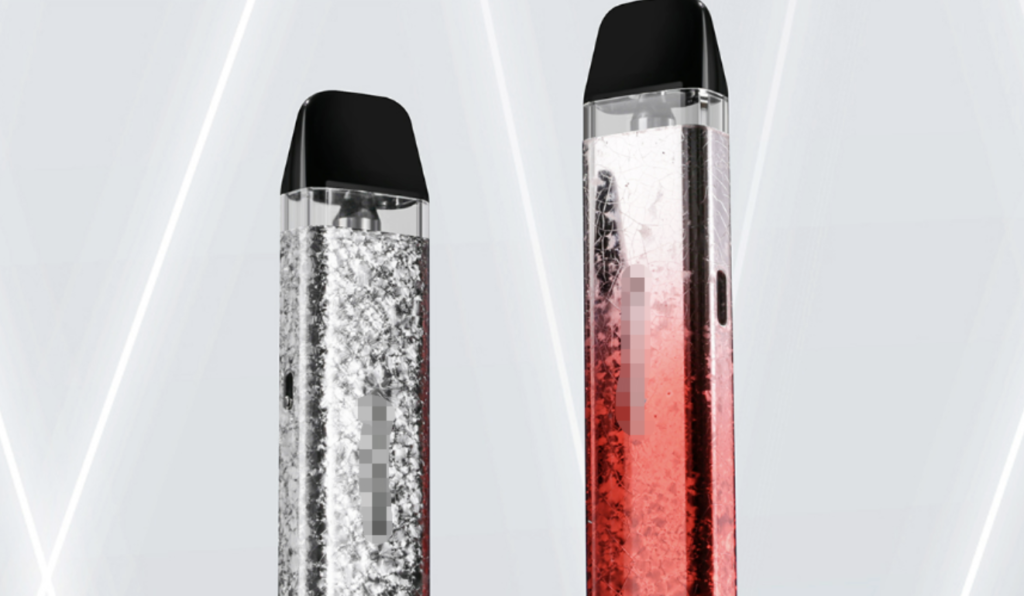
5. Sand Flow Effect
The sand flow effect in vape shells is created by placing a hollow layer between two shell layers, filling it with sand oil and powder. This effect involves transparent shells, sand filler, and an inner shell.
The transparent outer shell is typically made of materials like PC, ABS, PMMA, or PCTG, offering good light transmission and processing properties.
The sand filler consists of small metal particles (such as copper or aluminum powder), colored liquids, sequins, and decorative pieces. These materials are suspended in a special sand oil, which is non-toxic, environmentally friendly, and stable.
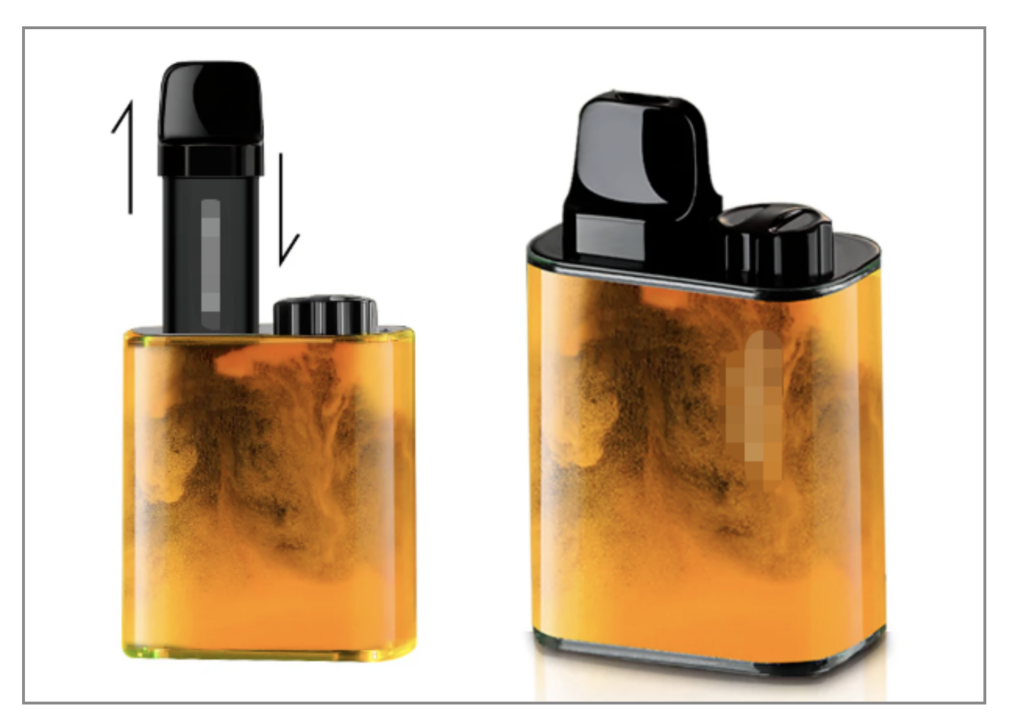
These various techniques and effects demonstrate how appearance craftsmanship plays a vital role in the competitive vape market, providing both aesthetic and functional benefits to vape products.

